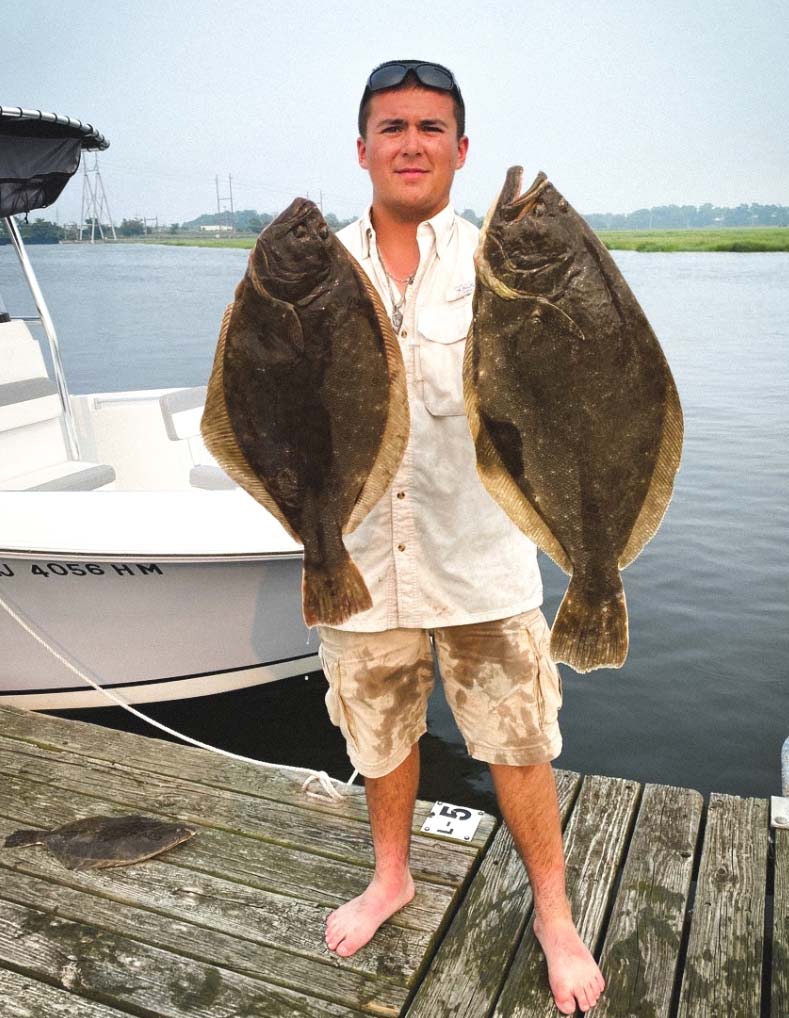Give more thought to your line choice as it affects the rest of fluke weaponry decisions.
Recently I’ve been reminiscing on my past. While doing so, I can’t help but cringe thinking of the awful braid I had spooled up as a 13-year-old angler, whose only income at the time was from writing weekly freshwater articles for The Fisherman.
However, I am very thankful that I molted from that shell and have evolved to have a much better understanding of the importance of line choice, especially when it comes to fluking! Line can often be treated with much less importance than other equipment, but after being introduced to, and outfished by, the higher quality and much thinner diameter braided lines, I did some experimenting to see if going light is worth it.
Before my enlightenment, most of my inshore reels were spooled up with the cheapest and roughest 30- to 40-pound braid that pocket change could buy. Then, I began to notice how my one friend would hold bottom with a much smaller jig than I, and catch more fluke! This bugged me because he was right next to me, yet it seemed like he had a much better drift…little did I know at that moment, he was spooled with 15-pound, eight-strand braid (AKA dental floss).

Now, if I hadn’t thoroughly been outfished, I would have been making fun of his spool due to my prejudiced thoughts of the potential dangers that fishing with such light line could bring. Despite the opportunity for error, I ignored my fears and spooled up with the thin stuff—15-pound Super Slick v2 was my first test.
The next few trips out, I noticed how much lighter I had been able to get away with on my jigs. For example, in areas and situations where 5 to 8 ounces was needed to hold bottom, most days I could get away with 2 to 3 ounces and a teaser. The reduction in drag that the lighter braid provides is such a game-changer when it comes to offering a better and lighter presentation to the fish; and it’s easier on the jigging arm too!
So even though this produced well, I wanted to see how far I could take this by eliminating my teaser and only fishing a single jig with the 15-pound braid and very thin diameter fluorocarbon leader ranging from 15 to 20 depending on how rocky the bottom was. This allowed me to go even lighter, and on one specific trip in 50-feet of water, drifting about 1 mph, I was able to use a 1-ounce jig with no problem. Using the single jig without the drag of the teaser allows for much better and more direct connection to your jig, and often results in catching larger fluke.
The week before writing this I had my limit containing a couple 23-inchers and a 26-incher all on a single jig; but don’t get me wrong, there is a time and place for everything and I still often jig with a teaser above. Those days that I used my lighter rod with the single jig were days that the fish were showing a preference for the jig rather than the teaser, so I saw an opportunity to go lighter.
When it comes to line choice, any eight-strand light braid will get the job done, but I personally love the Sufix 832 braid because I find it cuts right through the water and still holds up well against abrasion which was my main concern before converting. Also, if 15 seems a bit light like it did for me, starting at 20 is fine and still allows for many of the advantages.
Realistically, a bucktail and teaser is what I will use most of the time, especially when lighter ones can now easily be used. Just don’t be too skeptical of dropping a single jig to try to pick off the larger fluke. Even though I recently wrote about how elephants love peanuts (July 19, 2021 edition of The Fisherman), sometimes they want something a bit bigger and more erratic than the teaser.


